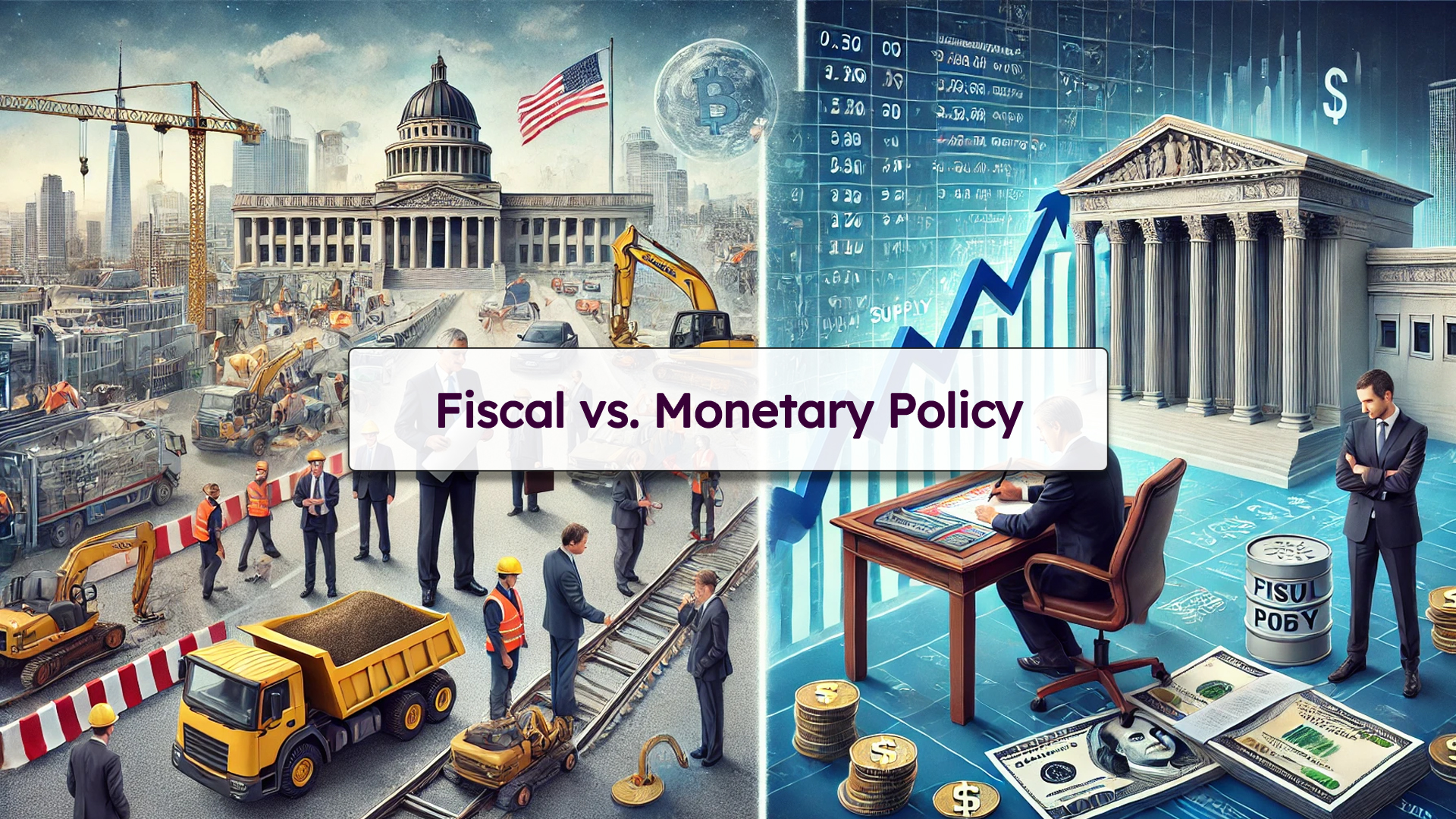When an economy faces a downturn, policymakers have two primary tools at their disposal: fiscal policy and monetary policy. Both play crucial roles in economic recovery, but which is more effective? The answer depends on the nature of the economic crisis, the responsiveness of markets, and the speed of implementation.
Understanding Fiscal Policy
Fiscal policy involves government decisions on taxation and public spending to influence economic activity. During economic recessions, governments may adopt expansionary fiscal policies by increasing spending on infrastructure, social programs, and direct stimulus measures or by cutting taxes to boost consumer and business spending.
Pros of Fiscal Policy:
- Direct Impact on Demand: Government spending directly increases aggregate demand, stimulating economic growth.
- Targeted Assistance: Can be tailored to support specific industries or demographics, such as unemployment benefits or small business grants.
- Multiplier Effect: Increased government spending can have a ripple effect, leading to more jobs, higher wages, and increased consumer spending.
Cons of Fiscal Policy:
- Implementation Lag: Policy changes require legislative approval, leading to delays in execution.
- Budget Deficits: Increased government spending can lead to higher national debt, raising concerns about long-term fiscal sustainability.
- Inflationary Risks: Excessive spending can overheat the economy, leading to inflation.
Understanding Monetary Policy
Monetary policy is controlled by central banks, such as the Federal Reserve in the U.S., and involves adjusting interest rates and money supply to influence economic activity. During economic downturns, central banks lower interest rates and increase liquidity through open market operations or quantitative easing.
Pros of Monetary Policy:
- Speed and Flexibility: Changes in interest rates and liquidity injections can be implemented more quickly than fiscal policies.
- Independence from Politics: Central banks operate independently from the government, avoiding political gridlock.
- Encourages Investment: Lower interest rates reduce borrowing costs, encouraging businesses to invest and consumers to spend.
Cons of Monetary Policy:
- Limited Effectiveness in Liquidity Traps: When interest rates are already near zero, monetary policy may have little room to stimulate growth.
- Wealth Inequality Concerns: Lower interest rates can inflate asset prices, disproportionately benefiting wealthier individuals.
- Indirect Impact: Unlike fiscal policy, which injects money directly into the economy, monetary policy works through financial intermediaries, potentially reducing its immediate effectiveness.
Which is More Effective?
The effectiveness of fiscal and monetary policy depends on the economic context. In severe recessions, such as the 2008 financial crisis or the COVID-19 pandemic, fiscal policy is often more effective due to its direct impact on demand and employment. However, monetary policy is crucial for maintaining financial stability and ensuring long-term economic health.
A combination of both policies tends to yield the best results. Coordinated fiscal stimulus alongside accommodative monetary policy can accelerate recovery and provide a more balanced approach to economic stabilization.
Conclusion
There is no one-size-fits-all answer to whether fiscal or monetary policy is more effective in economic recovery. While fiscal policy directly stimulates demand, monetary policy ensures financial stability and liquidity. In most cases, a balanced approach leveraging both tools leads to the most sustainable economic recovery.


